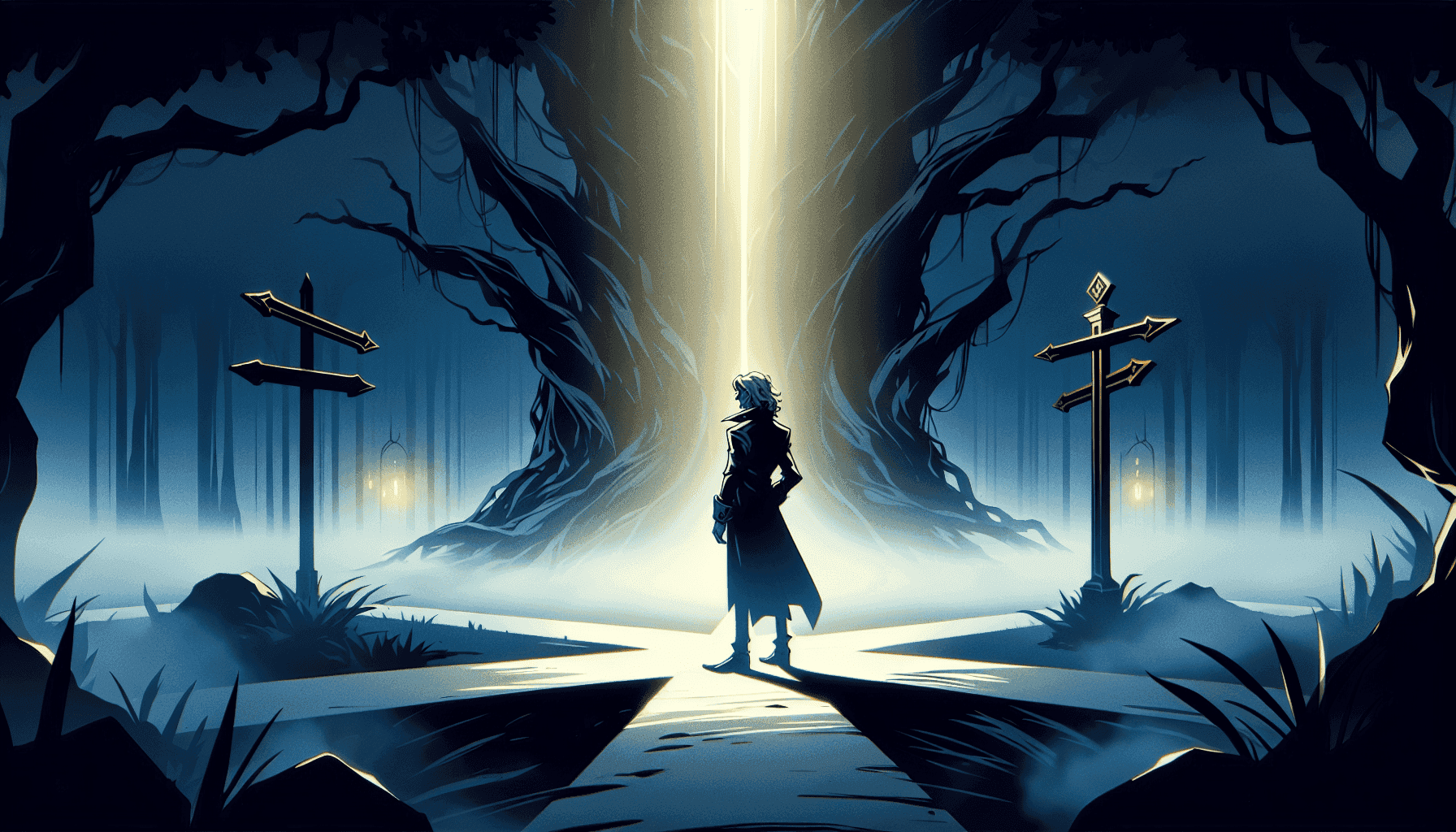Table of Contents
Creating a compelling antagonist can be tough, right? Often, we find ourselves scratching our heads, wondering how to make them memorable without slipping into cliché villain territory. It’s a common struggle, but don’t worry—you’re not alone in this!
If you stick around, I promise you’ll uncover the secrets to crafting an antagonist that’s not only believable but also complex and engaging. By the end, you’ll have the tools to transform your character from a simple obstacle into a rich part of your story.
We’ll cover everything from giving your antagonist relatable motivations to ensuring they have their own character arc. Buckle up, because we’re about to dive deep into antagonist development!
Key Takeaways
Stefan’s Audio Takeaway
- A strong antagonist actively drives the story and challenges the protagonist.
- Develop their background and motivations rooted in personal flaws for relatability.
- Humanize them with relatable emotions like fear, love, or pain.
- Add positive traits to create a more complex and sympathetic character.
- Establish clear conflict that embodies a direct threat to the protagonist.
- Balance their strengths and weaknesses to ensure realism in confrontations.
- Show the antagonist’s perspective to evoke empathy from readers.
- Keep the antagonist active in the story, impacting the plot consistently.
- Build an emotional connection by showcasing their vulnerabilities.
- Ensure the antagonist has a character arc for depth and impact.

1. Create a Strong Antagonist
A strong antagonist is essential for any great story. They should be more than just a villain in the shadows; they need to actively drive the narrative forward and present genuine challenges to the protagonist. Think of characters like the Darkling from Leigh Bardugo’s Shadow and Bone, who is not just oppressing the Grisha but is also a product of his past. Shaping your antagonist’s strength helps the protagonist grow, creating a richer narrative.
2. Develop Their Background and Motivations
Understanding your antagonist’s background is crucial in making them compelling and engaging. Their motivations should stem from personal flaws and real-life experiences. For example, they might desire power due to a history of neglect or betrayal. Take the time to explore the details of their past, even if those details don’t make it directly into the story. The deeper the history, the more relatable they become.
3. Make Them Relatable and Human
Your antagonist shouldn’t just be a one-dimensional character with evil plans. They need relatable flaws and traits to resonate with readers. Think about how Hannibal Lecter’s charisma and intelligence make him more intricate. Audiences might not agree with them, but they can understand their perspective. By humanizing them through emotions such as fear, pain, or love, you create an antagonist who readers will remember long after the story ends.

4. Add Positive Traits to Enhance Depth
A memorable antagonist isn’t all bad; in fact, adding positive traits can make them more complex and relatable. Imagine a villain who shows moments of compassion or has a cause they genuinely believe in. These traits create a richer character that readers might even sympathize with. For instance, the Darkling from Shadow and Bone desires power not just for personal gain, but to fight for the Grisha’s freedom, making his character multifaceted.
5. Establish Clear Conflict with the Protagonist
Your antagonist should embody a direct threat to your protagonist’s goals, values, or wellbeing. This often leads to intense confrontations that shape the story. Consider how Voldemort’s quest for immortality and power directly opposes Harry Potter’s mission to protect his loved ones. Establishing this clear conflict propels the narrative and keeps readers engaged.
6. Balance Strengths and Weaknesses
Creating a balanced antagonist is key. They should be potent enough to challenge your protagonist, yet have identifiable weaknesses to exploit. Think of Lex Luthor from the Superman series; his genius intellect and resources make him formidable, but his obsession with Superman becomes his downfall. Balancing these traits ensures that the confrontation feels earned and realistic.
7. Show the Antagonist’s Perspective
Giving readers a glimpse into your antagonist’s mind can transform how they view the character. It humanizes them and can lead to moments of empathy. In *Game of Thrones*, characters like Jaime Lannister are initially seen as villains, but as we learn about their motivations and struggles, our perception shifts. Make sure to show their thoughts and feelings to enrich their portrayal.
8. Keep Them Active in the Story
Don’t let your antagonist fade into the background. They should consistently impact the plot and keep the tension high. Consider providing them with goals that align with their motivations. An active antagonist, like the Joker in *The Dark Knight*, constantly troubles the protagonist, making the stakes feel urgent.
9. Build an Emotional Connection with Readers
To make your antagonist resonate with readers, they must evoke strong feelings—good or bad. You can achieve this by developing their backstory and showcasing their vulnerabilities. For instance, in *Breaking Bad*, Walter White’s tragic journey from a mild-mannered teacher to a ruthless drug lord creates a complicated emotional reaction. Readers can feel both anger and pity, enhancing the story’s depth.
10. Ensure a Character Arc for the Antagonist
Just like protagonists, antagonists should experience growth or change throughout the story. This arc adds depth to their character and often makes their downfall or redemption much more impactful. Take Thanos from *Infinity War* and *Endgame* as an example. His perspective shifts as he grapples with morality and purpose, adding layers to his motivations and choices.
FAQs
A strong antagonist typically possesses clear motivations, relatable characteristics, and complexity. They should evoke both conflict and empathy, driving the story while challenging the protagonist in meaningful ways.
Developing an antagonist’s background adds depth and context to their actions. Understanding their history and motivations helps readers relate to them, making conflicts more impactful and nuanced.
To make an antagonist relatable, infuse them with human traits, vulnerabilities, and moral dilemmas. Show their struggles and choices, illustrating that they have genuine motivations, just like the protagonist.
An antagonist’s character arc is essential for character development and thematic depth. It allows for transformation or realization, creating a compelling contrast to the protagonist’s journey and enhancing overall narrative tension.



